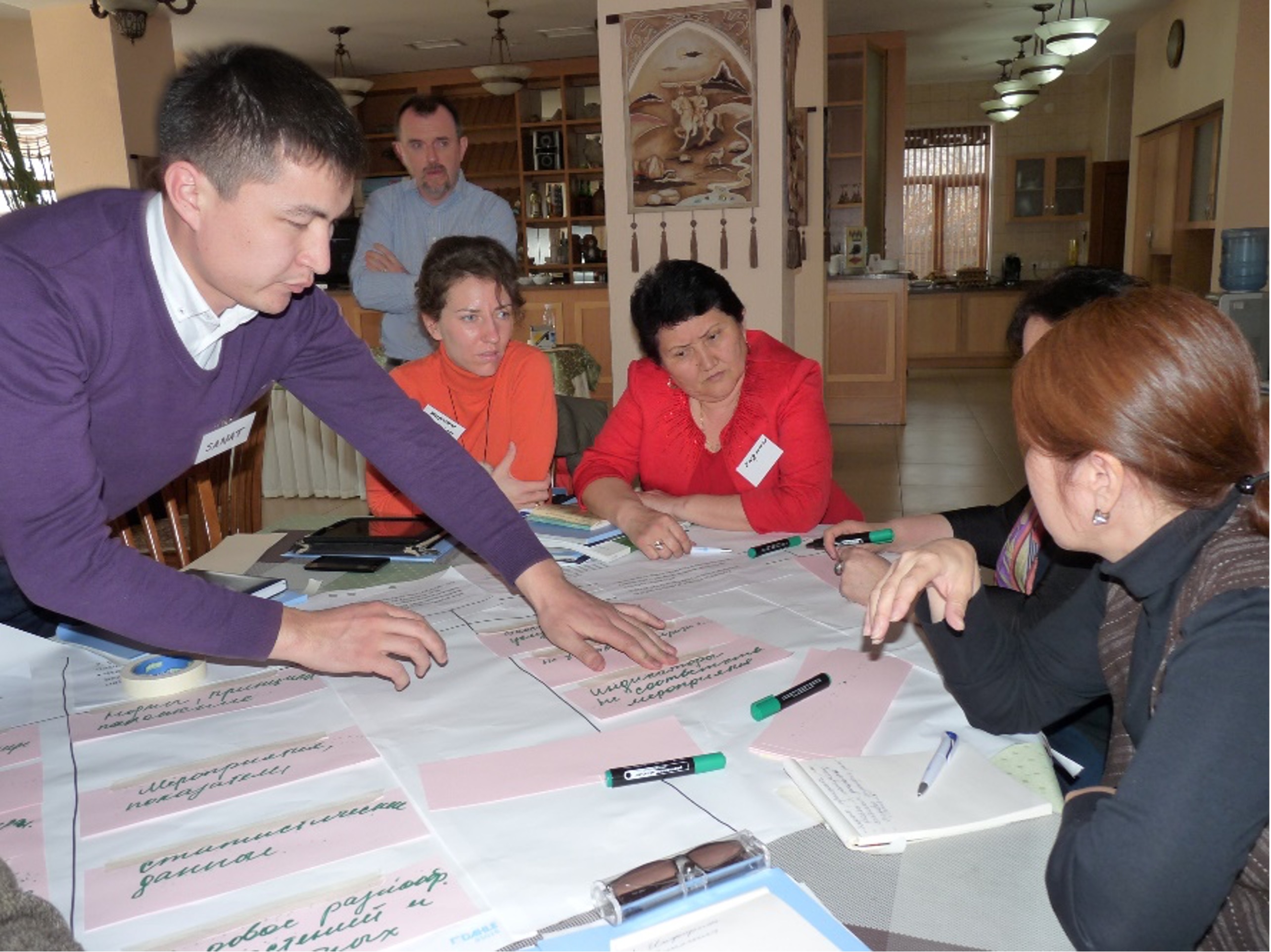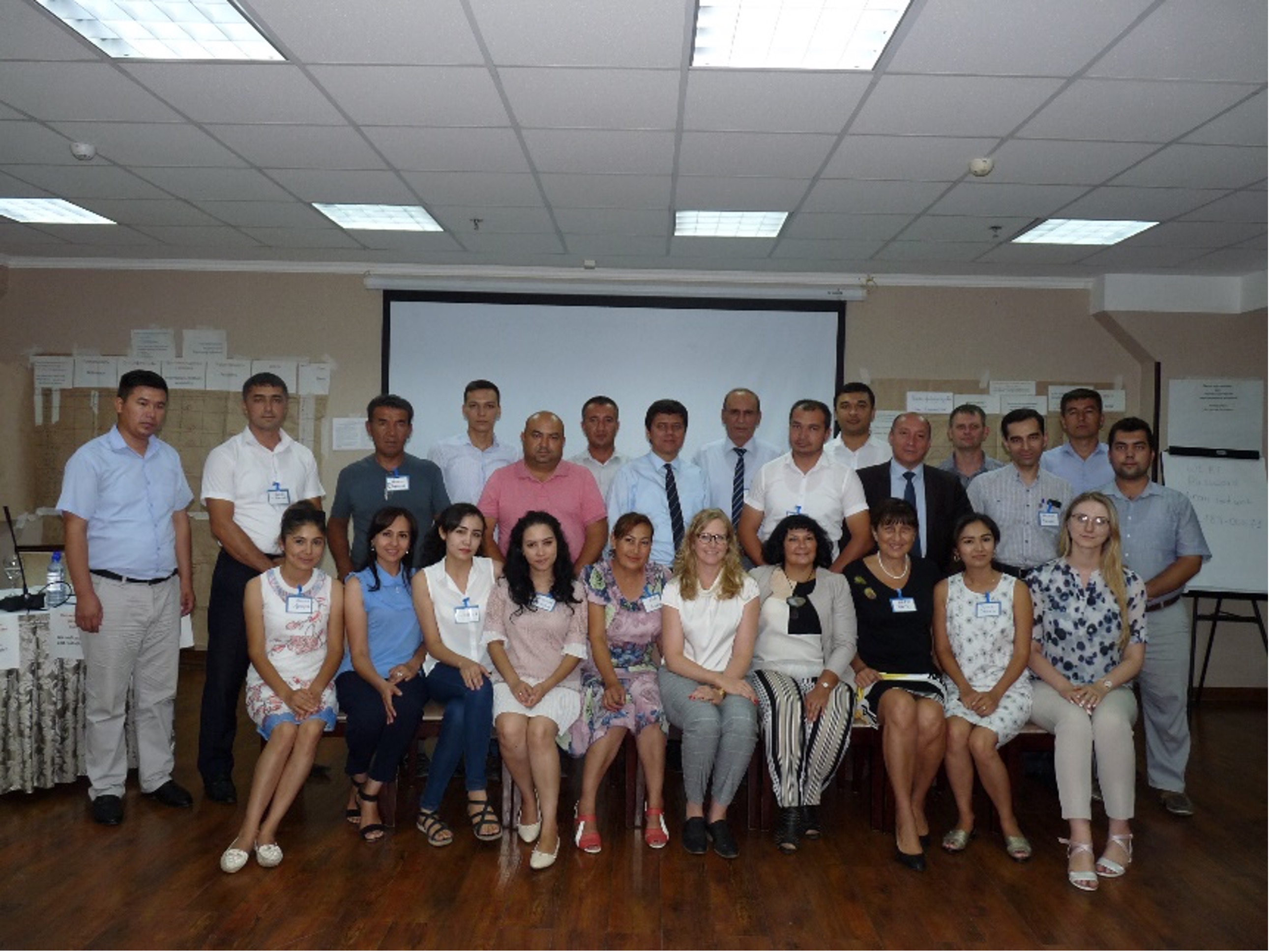 Criteria and Indicators for Sustainable Forest Management in the Caucasus and Central Asia
Providing countries with a modern, innovative governance tool to protect and manage forests, the interests of stakeholders, owners, managers and the public
Criteria and Indicators for Sustainable Forest Management in the Caucasus and Central Asia
Providing countries with a modern, innovative governance tool to protect and manage forests, the interests of stakeholders, owners, managers and the public

Challenges
Most of the countries in the Caucasus and Central Asia region are ‘low forest cover countries,’ and struggle with the degradation of their limited natural resources due to deforestation, illegal logging and extensive grazing. The countries do not regularly monitor the status of forests and often lack a comprehensive approach to linking forests to sustainable development.
The availability and access to relevant information is the key condition for the development of forest governance and management and of related legislation, tools and systems. Criteria and indicators (C&I) for sustainable forest management (SFM) are central tools applied in advanced forest management systems for collecting, managing and using data.
In 2015 there were no active systems for C&I for SFM in countries of the Caucasus and Central Asia, due to the lack of capacities and knowledge on the topic, therefore national capacities in that regard needed to be strengthened.
Towards a Solution
To improve this situation and strengthen the capacities of national governments and stakeholders in Armenia, Georgia, Kazakhstan, Kyrgyzstan and Uzbekistan, UNECE, jointly with the FAO Forestry and Timber Section, implemented the UNDA 10th Tranche project, entitled “Accountability Systems for Sustainable Forest Management in the Caucasus and Central Asia”. The project aimed at strengthening the national capacity of beneficiary countries to develop national accountability system for sustainable forest management, primarily through the development of national criteria and indicators (C&I) for sustainable forest management (SFM).
The project was designed as a mutually reinforcing combination of sequenced activities: national capacity-building workshops, regional workshops, advisory missions, policy briefs, assessments of the situation, and recommendations to improve national policies. Detailed knowledge and methodology for the implementation of the project was provided through “Guidelines for the Development of a Criteria and Indicator Set for Sustainable Forest Management,” developed explicitly for the project. The Guidelines provide specific concepts, definitions, tools and reference materials to guide the development process of national C&I sets for SFM.
In the implementation of the project, UNECE strongly promoted the participatory, inclusive approach. Workshops were open to a range of national stakeholders and other forest-related ministries and institutions to ensure cooperation among them, to establish synergies within the national ministerial architecture and to secure future support in the implementation of the developed tools. The importance of stakeholders’ participation in the development and implementation of C&I is reflected in the Guidelines, which contain the toolbox of participatory methods to assist the development process of national C&I and their use.
The activities were designed to help countries in gradual learning, in developing their systems, in consulting with stakeholders that did not participate in the project to facilitate mutual learning. Many similarities among the countries of the region can be identified; they also share many challenges, including scarcity of relevant knowledge and experience thus benefiting from the work and experience of other countries in the project.
It was a key factor not only for developing national solutions but also for creating conditions for their future cooperation. It also had amplifying effects, sharing information among non-project countries from the region and outside interested in this topic, at the project’s regional meetings (with extended participation) or at intergovernmental meetings.
During the project’s implementation in 2016-2020, the five project countries developed their national sets of C&I for SFM and tailored methodologies for data collection for all indicators within these sets. Further, policymakers received additional information (policy briefs) on the use and application of C&I in:
- Sustainable Forest Management;
- National Forest Inventory;
- Monitoring, Assessment and Reporting;
- Information Systems; and
- Forest-related communication.
C&I for SFM are an innovative, modern, flexible tool developed for defining the scope and relevance of the information that was needed for the implementation of SFM at the national level to support evidence-based policymaking. Though they can be perceived as a tool for monitoring the status and trends in the forest sector, their role is far more important, as they can be used for designing quantifiable objectives, helping in communication with stakeholders, and eventually monitoring progress towards sustainable development goals. Foremost, their innovativeness lies in their potential to integrate several types of activities, managerial levels and thematic areas into a modern forest policymaking tool. Furthermore, they are supposed to strengthen forestry in connecting with other sectors.
A national set of C&I for SFM is intended to be used by national authorities to sustainably manage and monitor forests in countries on a daily basis. They are intended to serve as the long-time framework, guiding national forest policymaking. Through this, they support the long-term sustainability of forest management practice, and rational and coherent implementation of approaches and use of methods and tools in that regard.
The project contributed to improving the development of policy-supporting tools in beneficiary countries, and to increase awareness of the options for further development in this sphere. Five policy briefs developed within the project display the path for the use of criteria and indicators as policy tools for SFM and decision-making (monitoring, assessment and reporting), as well as forest-related communication. They also describe the use of C&I for SFM for the development of the National Forest Inventory: a basic tool for forest information collection and information systems: a useful tool for better forest policy and management.
The results achieved through the project strengthened national capacities both in achieving SDG15 (Life on Land), and other Goals, including SDG7 (Affordable and Clean Energy), SDG12 (Responsible Consumption and Production), and SDG13 (Climate Action), and also equipped countries with the tool for coordinating work towards their implementation.
C&I for SFM is the tool that provides a common framework, approach and structure that can be adjusted to the national economic, social, environmental or even political conditions. Due to their flexible nature, they can be developed in any country and applied both at the national, regional and local levels. This makes them an extremely useful tool for a thorough implementation of national and international forest policies. Experience gained and tools developed during the project provide a package of knowledge that can guide other countries (or other interested parties) interested in developing their C&I. Although the package was developed by the
forestry sector, it provides knowledge that can be used by other sectors due to its universal approach, openness to different topics and sectors and its multistakeholder environment.
Experience from project implementation shows a genuine interest among stakeholders already at the developing stage of the process. This proved the value of C&I and their integrative potential. In a way, they can be characterized as a common language, translating hermetic, complicated technical matters of forestry, reserved for highly specialized experts, to a broader audience at various levels and areas of life who have an interest in forests. By building national sets, the project provided a good starting point for the full utilization of this potential, however, a lot depends on how these tools will be integrated into the national political system, in particular how they will be recognized when they become part of legislation.
Contact Information
Countries involved
Supported by
Implementing Entities
Project Status
Project Period
URL of the practice
Primary SDG
Primary SDG Targets
Secondary SDGs
Secondary SDG Targets
Similar Solutions
| NAME OF SOLUTION | Countries | SDG | Project Status | |
|---|---|---|---|---|
A Billion Brains: Smarter Children, Healthier Economies High Level Meeting on South-South Cooperation for Child Rights |
Armenia, Georgia, Kazakhstan, Kyrgyzstan, Uzbekistan | 17 - Partnerships for the Goals | Completed | View Details |
ACP Business-friendly Supporting business-friendly and inclusive national and regional policies, and strengthening productive capabilities and value chains |
Armenia, Georgia, Kazakhstan, Kyrgyzstan, Uzbekistan | 08 - Decent Work and Economic Growth 17 - Partnerships for the Goals | Ongoing | View Details |
Addressing the Philippine Dairy Sector Challenges Exchanging knowledge between Argentina and the Philippines to improve Philippine local dairy production |
Armenia, Georgia, Kazakhstan, Kyrgyzstan, Uzbekistan | 08 - Decent Work and Economic Growth 17 - Partnerships for the Goals | Ongoing | View Details |
Addressing the Transboundary Dimensions of the 2030 Agenda through Regional Economic Cooperation and Integration in Asia and the Pacific Promoting co-deployment of ICT and transport infrastructure corridors in Central Asia region |
Armenia, Georgia, Kazakhstan, Kyrgyzstan, Uzbekistan | 09 - Industry, Innovation and Infrastructure 13 - Climate Action 17 - Partnerships for the Goals | Completed | View Details |
Addressing Water Pollution and Supporting Water Management in Arab Countries Training and collaboration for improved water management in arid to semi-arid areas |
Armenia, Georgia, Kazakhstan, Kyrgyzstan, Uzbekistan | 17 - Partnerships for the Goals | Completed | View Details |



